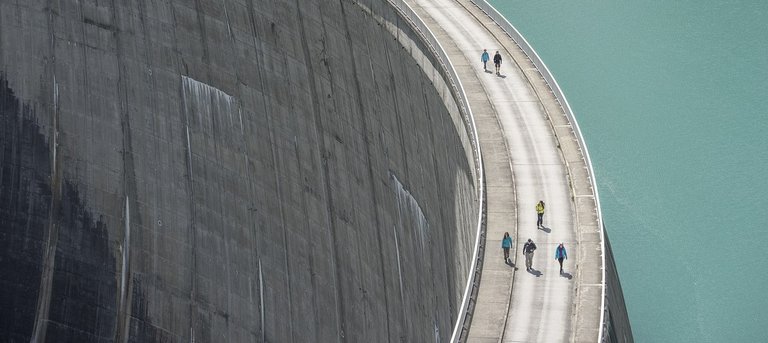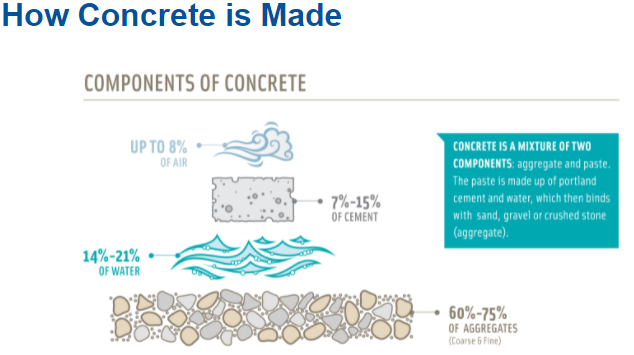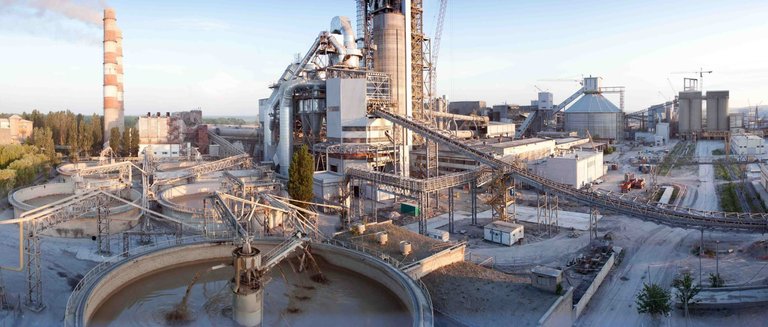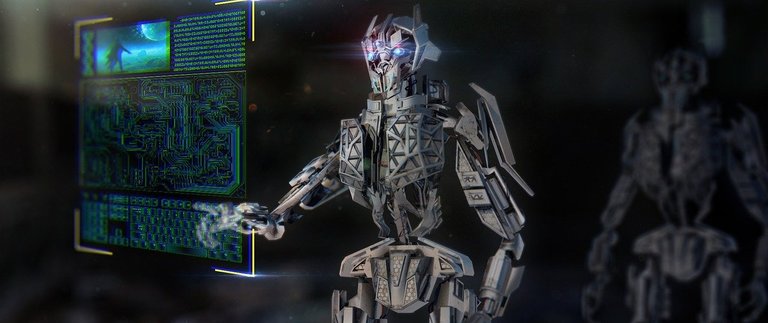Environmental Impacts - Concrete

Concrete is a central backbone in the development of human society. It is so ingrained in our culture that we take it for granted. The contribution of concrete towards stability even escapes us as we utilize buildings for work- or live-in homes we have purchased. Our lives are drastically different without the concrete used to shelter and stabilize our lives. Despite the everyday use of concrete, its production is straightforward to create and complex to develop. After all, the development of concrete progressed from ancient Turkey and Roman society until our modern age.

Introduction

Greetings fellow Hivians and welcome to another installment in the Environmental Impacts series, this time covering concrete. I was inspired to write about concrete due to a recent Master's Degree project I had to complete for school.
It involved generating a Request for Procurement of an Environmental Impact Study needed for a county's approval prior to construction of a concrete production plant. It was during research for the project I realized the kind of impact concrete has in our society. Our society can't grow without it.
It's been some time since I've posted, but as many of you can attest, there have been challenges over the last year we've all had to overcome. It's a story for another time, however. Until that story comes around, let's explore a topic whose impact we can't truly understand.

Ancient History

Society can trace back the use of concrete, even in its precursor form, to ancient Middle Eastern builders in 1300 BC. Even further, archaeological evidence even shows the use of concrete in the country of Turkey as far back as 10,000 - 12,000 BC.
More surprising, however, is the existence of a component of concrete.
Cement, the binder that holds all of concrete's components together, may have existed beyond the existence of humanity. Apparently, evidence of prehistoric cement formation exists with the natural formation of cement occurring between limestone and oil shale as far back as 12-15 million years ago.

What is Concrete?

Concrete represents a combination of cement, water, and other aggregates. The combination of water and cement allows the mixture to harden over time in a process called hydration. The result is the concrete we are familiar with today.
Society can mold concrete into virtually any desired form. From garden statues to mega-dams, concrete will continue to serve society's needs. While concrete serves as a backbone in our development, its environmentally destructive properties force the concrete industry to make concrete processes sustainable.

Environmental Impacts

Worldwide production of concrete produced up to 8% of global CO2 output, half of which occurs during cement production. Concerns over climate change have led to calls to seek improvements in production processes and alternatives used in conventional concrete production. Concrete industries, fortunately, recognize this fact and are working towards developing concrete that adheres to global sustainability goals.
CO2 is not the only gas emitted from creating concrete. According to the Environmental Protection Agency, the concrete sector releases hundreds of thousands of tons of toxic gases. Unfortunately, the release of these greenhouse gases is not the only environmental concern of the concrete process.
Additionally, water consumption during the concrete production process poses a problem. The world produces billions of tons of concrete for development. Making concrete uses up a lot of water. The concrete industry requires 1/10 of global industrial water use to meet demands.

Other Concrete Production Risks

Mixing the ingredients of cement, for instance, poses an airborne risk to workers at a concrete production plant. Mixing also generates large amounts of wastewater that, if mishandled, can adversely impact local water or food sources.
The use of these production plants also requires energy. Increased demands of power from pollutive energy sources will adversely impact climate change. Combining these risks contributes to climate change and will also lead to adverse health effects of populations adjacent to these production facilities.

Cement Production

Cement is a critical component that the RFCP Concrete Production Plant will acquire to create concrete. Creating cement first involves obtaining raw materials like limestone, calcium, aluminum, and a host of other items. These raw materials get crushed to reduce their size enough to allow for dry mixing with other ingredients and heating. Once at the appropriate size, and after dry mixing, the resulting powder gets heated to over 2,000 degrees Fahrenheit that acts to drive out gaseous impurities. Further grinding of the powder and mixing with other ingredients produce the cement we are familiar with today.
Significant Contributor
Cement accounts for half of the greenhouse gas emissions in the concrete production process. Each pound of cement produce contributes to the release of 0.9 lbs of CO2. Every 100-pound bag of conventional cement requires 5.2-gallons of water to mix. The annual water amount needed to create concrete is equivalent to the consumption of water by 145-million people.
Greenhouse gases and water use would be much of a problem, however, if it wasn't for the fact that our society uses so much of it. In 2013 alone, the amount of concrete needed by the global concrete industry required the production of almost 4-billion metric tons of concrete. The end result was a process that generated 5% of global CO2 emissions.

Environmental Solutions

A change of additives
Cement releases an enormous amount of CO2 due to its use of Limestone in its production process. Replacing limestone with elements like flyash or slag would significantly reduce CO2 generation. Flyash and slag are byproducts of conventional coal power and steel production. A company like CeraTech is looking to completely replace traditional cement with a new mixture that includes these byproduct and some proprietary chemicals. CeraTech's new mixture appears as robust as traditional cement with some added superior qualities.
Substituting CO2 for Water
Solidia Technologies purports that their process seeks to reduce CO2 production by a whopping 75%. Instead of utilizing water to cure the cement, Solidia places its concrete blocks in controlled ovens that circulate CO2. The result is a economically friendly concrete product that can be utilized in construction.
The problem with this technology, unfortunately, it that its new and can only be produced in the form of blocks for transportation to other locations. The majority of concrete produced on Earth is via a ready-mix solution. In this type of product, concrete is mixed and pumped into the needed areas for construction. It's either made on the construction site or transported by cement trucks.

Cement Production Video

What's Next

Anything on your mind? Please discuss below. Want me to write about a topic you're yearning to learn about? Please comment below and subscribe to follow my progress on your topic!

In Closing

Image by Gerd Altmann from Pixabay
Thank you for reading and following on throughout my Hive journey. I'll work more efficiently to get these posts out to the community more frequently regardless of my other obligations. Have a great day everyone. Thanks for stopping by.

Congratulations @scholaris.pob! You have completed the following achievement on the Hive blockchain and have been rewarded with new badge(s) :
Your next target is to reach 50 upvotes.
Your next target is to reach 50 replies.
You can view your badges on your board and compare yourself to others in the Ranking
If you no longer want to receive notifications, reply to this comment with the word
STOPSupport the HiveBuzz project. Vote for our proposal!
Great post! Few people pay attention to the HUGE footprints left behind long before we build new roads and buildings.
I'm not too excited about CeraTech's announcement yet. Too often these 'proprietary' mixes will have as large, or greater footprint than the materials they replace. Likewise with the Solidia process, how does their oven-curing balance out with the reduction in water use? If you're saving water on-site, but it's getting used elsewhere to meet your extra energy needs, it's not really getting saved at all.
Flyash and slag are already added to many cement mixes in the US, and are required in most government funded projects. There's a lot of pros and cons to how and why we do that, along with lots of big business and politics. It would take 1500 words to scratch the surface of that mess, so I'll skip it for now.
I'd like to use all those words to talk about how much of the waste and ruin in this, and nearly all other industries, is due mostly to greed. We have the science and technology to heat cementitious materials to the required 2000°F way more efficiently that we do now, which is by burning fossil fuels either directly for heat, or indirectly for electricity, usually a lot of both. The problem is it lowers profits. We could drastically cut down on the transportation related pollution by using smaller, mobile facilities that can be set up at or near the point of construction. We do this in America if a project is large enough that the setup cost for on-site production will be less than the cost of transporting the materials, but very seldom do environmental concerns figure into that math beyond comliance with regulations.
A new Age is dawning, I hear, so maybe people will evolve out of the mindset that led us here before it's necessary. I don't fear too much for the fate of the human race, because we tend to perfom better as a species when under threat of extinction. We have the knowledge to continue our growth, AND make this world a green paradise that we can all enjoy. All we need now is the will to put the long term well being of our species ahead of profits and ego.
"The old way is the good way". In my opinion, the new "cleaner" cement technologies are just testing the waters. Portland cement is currently the king of the cement industry and it will be quite sometime before it gets replaced. You're correct that changing the status quo certainly reduces profits and that is a huge detractor.
In regards to Solidia, they introduce a process that replaces the water normally used in curating with CO2 in a heated oven. The technology is ONLY applicable to precasting. What this means is that they have to cast the cement into the final product first, heat it in an oven, and then saturate it with CO2 within the same oven. The final product is a hardened concrete brick that is then used in construction products.
You aren't wrong about the impact of greener solutions. This is the trickiest part. It could easily have a greater impact than CO2, but since it's proprietary no one will know for some time.
Green solutions remind me about the fable of the panacea. Taking it removes all ailments from your being and, perhaps, grants you immortality to a degree. However, if you stop taking the drug, you will surely die a horrible death.
Take, for instance, solar power technology. The tech advances further and further to a point where it surely will capture a majority of the energy reflected upon it. The marketing done on a global scale is impressive, but in no way covers the impact of the hazardous and toxic materials it consists of or addresses how to deal with it once it needs to get replaced.
The biggest problem with most modern 'green solutions' is that they're neither green, nor solutions, just profit machines telling a sustainable lie.
Money, politics, and industry are currently an inseparable unholy trinity all aimed at maintaining the status quo. Solar power is a great example of this... solar panel farms are the worst possible implementation of solar powered electricity, but it's the one that keeps the money flowing where it's always been flowing. Decommission coal plants be repurposed as solar furnace powered generators, but it's cheaper to just close them, and it helps keep the price per kw/hr up.
I agree with you, but also must write that politics is the biggest problem. Buying your political favors, I mean, lobbying is a significant reason for the problems we have today.
Repurposing decommissioned facilities is a worthwhile endeavor. I wish companies would utilize this option more.
If you see buying political favors as the biggest political problem, that makes money the bigger problem. I'm not disagreeing with your thoughts on politics and lobbying, just with your heirarchy of problems. They're all so intertwined now... industry concentrates money into the hands of few, who use that money to influence politics, to allow them to grow their industry and control more money...
By themselves, none of these things are inherently bad, but by giving control of all three to the same small group of people, we've created a perfect petri dish for corruption, which is the decay that eats away at all of institutions.
Unfortunately, corruption is a part of who we are as a species, so until we evolve out of that, we'll never get rid of it. The best we can hope for is keeping the levels of corruption low enough that the corrupt merely impede our progress, rather than guiding it.
Apologies for the late reply. Kids and work called to me. I can't argue against my interpretation of the hierarchy you mentioned. I'm not beyond being mistaken about a thing.
I would also love to write that you're mistaken about these industries. Even the climate change revolution has its faults. I don't want to admit to corruption, but again I would also be wrong.
I'm happy, however, that we as a species can acknowledge we at least have an impact on the world even though it's quite evident from reviewing our history.
I struggled with the word 'industry'... maybe 'corporatism' would be better?
Our species' impact is undeniable, many scientists now call this the 'Anthropocene' age. I'll have a whole post in the near future about my thoughts on our impact on the planet, as well as our interpretation of our impact on the planet.
I've written about environmental impacts and popular forms of energy production on my parent account. I look forward to reading your blog when you're done. I love to read differing perspectives on the matters of human impacts. The common theme I find is that we all know something needs to change, but there's an immense pressure, as you've discussed, to either slow our progress or prevent it.
Welcome to this great place @scholaris! Im @perceval from @OCD team. We see this is your first post here, we would like to know more about you. It would be awesome if you do an introduction post. You can be guided and use this post as an example:
Thank you for your response. You know, I didn't realize I've never posted to the OCD family before. I'm surprised I've never done that before. I will write an introductory post as you recommend. Thanks for bringing this matter to light.
You're welcome. Looking forward to your introduction post.
We live in an environment where there is a deficiency of carbon dioxide in the atmosphere. At 700 parts per million we would have an optimum for plant growth. This is the amount they use in greenhouses. As we get toward that optimum plants create a negative feedback as they grow more and use up carbon dioxide as part of photosynthesis. Basically the carbon dioxide could drop suddenly should we stop creating carbon dioxide. That would be bad.
My country exists due to global warming. Oh Canada There is a lot of uninhabitable land in Northern Canada, Europe and Asia due to permafrost. I guess the fact that Canda isn't totally under ice is not because of human activity. It's a bit of a delusion of grandeur we are exposed to by the lamestream media to think so.
How can I use concrete to create more carbon dioxide than normal?
I'm not certain that concrete production would be the best option to just generate carbon dioxide alone. Not many production methods only produce those compounds we desire. It usually comes as a byproduct along with many other undesirable substances.
Coal Power production, for instance, gives us the much-needed energy society consumes, but generates toxic gases and lingering radioactivity we can do without.
Nuclear Power, on the other hand, gives us carbon-free energy albeit at the expense of radioactive waste we can't handle for thousands of years.
To generate the level of CO2 you feel you require would, unfortunately, draw the ire of global environmentalists. I don't know that there's anything you can do to achieve the results you desire.
I tell my students that I would rather live in a greenhouse than an icebox.
And that anyone who says "the Science is settled" in relation to any issue whatsoever has no clue what the word "science" truly means.
Make of that what you will, I guess.
A lot of thought went into this. I'm impressed.
Research and reports are related to my classes and IRL job. STEM is what I began focusing on when I started writing for STEEMIT frequently. It just carried over into HIVE. Thanks for stopping by!
I've read all the other comments on your post, as well as your post. My question to you was why is the water use at the point of mixing a problem in this scenario?
However, upon doing some digging, I found that OPC requires water as part of the chemical reaction that makes concrete...concrete...
Tricalcium silicate + Water--->Calcium silicate hydrate+Calcium hydroxide + heat
According to
http://matse1.matse.illinois.edu/concrete/prin.html#:~:text=The%20water%20causes%20the%20hardening,become%20hydrates%20or%20hydration%20products.**
Chemically:
2 Ca3SiO5 + 7 H2O ---> 3 CaO.2SiO2.4H2O + 3 Ca(OH)2 + 173.6kJ**
If this is the case, water is required to cause a chemical reaction binding the tricalcium silicate.
However, I'm glad you mentioned Solidia:
“Solidia Cement™ is a non-hydraulic cement composed primarily of low-lime-containing calcium silicate phases, such as wollastonite / pseudowollastonite (CaO•SiO2), and rankinite (3CaO•2SiO2). This contrasts with the high-lime alite (3CaO•SiO2) and belite (2CaO•SiO2) phases that comprise OPC. The setting and hardening characteristics of Solidia Cement are derived from a reaction between CO2 and the calcium silicates. During the carbonation process, calcite (CaCO3) and silica (SiO2) form and are responsible for the strength development in concrete.”
https://assets.ctfassets.net/jv4d7wct8mc0/5DwEAeEYqsFAYA9UC53EF7/4f8b7566221a8d9cb38f970867003226/Solidia_Science_Backgrounder_11.21.19__5_.pdf
The pdf says there is a liquid solution that is used; however, based on the chemistry, no water is used in the chemical reactions; therefore, you can make concrete without water.
I like that you brought this to my attention. It made me go down a rabbit hole. My impression had always been that the water used in making concrete simply evaporated, therefore the use of water was not an issue. I don't have a problem with heat sources creating CO2. I know that in some cases, the product used to create the CO2 in the first place could have been pulled from the air, like renewable natural gas. When natural gas burns, you get water vapor and CO2. The world recycles itself :)
Thanks for stopping by @bobthebuilder2! You can certainly create cement and concrete now without the use of water. The current problem is that the processes used to create concrete have been standard for so long that it will take some time to vet the new processes. The industry will slowly transition from the traditional Portland Cement and concrete to move away from water use.
If you enjoy that kind of detail, I'd be happy to provide them in my later posts. I was concerned about writing an article that was too long.
To directly answer your question, the concern isn't the water used for that particular scenario. Still, it becomes a problem if you consider the amount of water needed for the billions of tons of concrete we produce annually across the globe. Society will continue to expand, and water consumption during this process will lead to competition between the industry and population use.
My grandfather once told me not to complain about a problem unless I had a solution to propose. While I don't always do this, I have found it to be one of the most profound bits of advice I've ever been given. In your post, you've done that-mentioned a problem and provided a potential solution. I enjoy seeing that kind of detail because I have trained myself to think of molecules and elements moving in harmony. I work in the natural gas industry and am amazed at the dance that carbon, hydrogen, and oxygen play to give us comfort.
What an interesting reply. My father never told me that saying, but my military and civilian training certainly did. I work in the nuclear power production industry. I specialized in water chemistry and radiation protection, but I'm now working as a radiation engineer.
I enjoy the detail of presenting a problem with a solution as well. Honestly, there's no better way to go. From a project management standpoint, you'll rarely be denied funding with this approach. The second best option is to present the problem while seeking a solution. I've seen just as good resolutions coming from that position as well.
I never ceased to get amazed when I write these STEM articles. I'm all done writing about conventional, experimental, and theoretical power production. My next stem article will probably be on botanical power production or varying obscure nuclear power technologies.
I have to switch out topics now and again though to avoid getting stale in the presentation.
I guess I'll have to look at your old articles to see if you talk about thorium based reactors vs the conventional nuclear reactors. Perhaps you could write about how renewables like solar and wind are destroying the environment they are supposedly saving... :) Saw a TEDx talk on that not long ago-it was a push for nuclear-something I'm a fan of, and it makes sense...Looking forward to see what you write next.
I don't think I've gotten to Thorium yet, but I have the material available. However, I can certainly finish it after my next post on scientific victims. It would be my pleasure.
By the way, I just saw an article yesterday and thought about you because of this article on concrete...
https://www.smithsonianmag.com/innovation/combat-climate-change-researchers-want-to-pull-carbon-dioxide-from-ocean-and-turn-it-into-rock-180977903/#:~:text=Running%20seawater%20through%20an%20ocean,limestone%20on%20a%20grand%20scale&text=All%20of%20this%20excess%20carbon,are%20sensitive%20to%20the%20change.
Nice
This is one solid article! :D
I heard that another wnvironmental problem with concrete is overexploatation of sand which might be a problem pretty soon taking into considaration growing demand for concrete.
Thank you for the compliment! You're correct about sand, but also water becomes a factor too. As of 2018, I believe, we've been creating billions of tons of concrete per year.
Hi, @scholaris @scholaris.pob. I kickstarted Brain Power Up Day two days ago, which is already finished, but I am also hosting next month's. I know you stake most of your tokens, but would you consider contributing to next month's prize pool? This time, I was funding it myself with 30 POB + 50% author rewards for the post, but I plan using 30 POB + 100% of author rewards from the post. Whatever sum you can contribute will also be distributed among all participants. Yes, I'm going with equal distribution instead of picking 10 winners next time.
What actually happens to the water after it's used? Doesn't it eventually evaporate, going back into the water cycle?
It depends upon the type of concrete and whether it's a dry or wet mixture. Over time, the concrete will continue to harden in a "curing" process. Some water can return to the water cycle, but it can also lead to absorbing more water until the curing reaction becomes stable.
I wonder if we will ever make enough of the stuff for it to cause a shortage... Scary!
!PIZZA !ALIVE
@scholaris.pob! You Are Alive so I just staked 0.1 $ALIVE to your account on behalf of @wrestlingdesires. (1/10)
The tip has been paid for by the We Are Alive Tribe through the earnings on @alive.chat, feel free to swing by our daily chat any time you want.

Oh, no way. There isn't a worry about it at this time. The major concern is the amount of CO2 that gets generate and the amount of water that gets consume. There is PLENTY of the other materials needed.
Also, they are changing the way that concrete gets made to reduce CO2 and water consumption. However, like anything else new it will require a long time to test out all the kinks to these processes.
We really should be trying to have more plants in the cities, to lock up some of that CO2. More soil and less concrete, glass, and metal?
PIZZA Holders sent $PIZZA tips in this post's comments:
@wrestlingdesires(4/14) tipped @scholaris.pob (x1)
Please vote for pizza.witness!